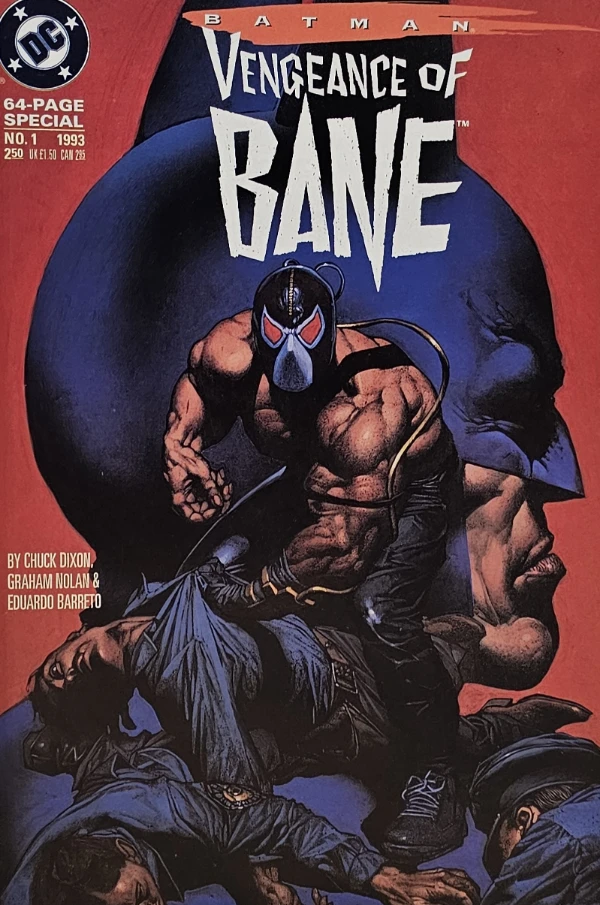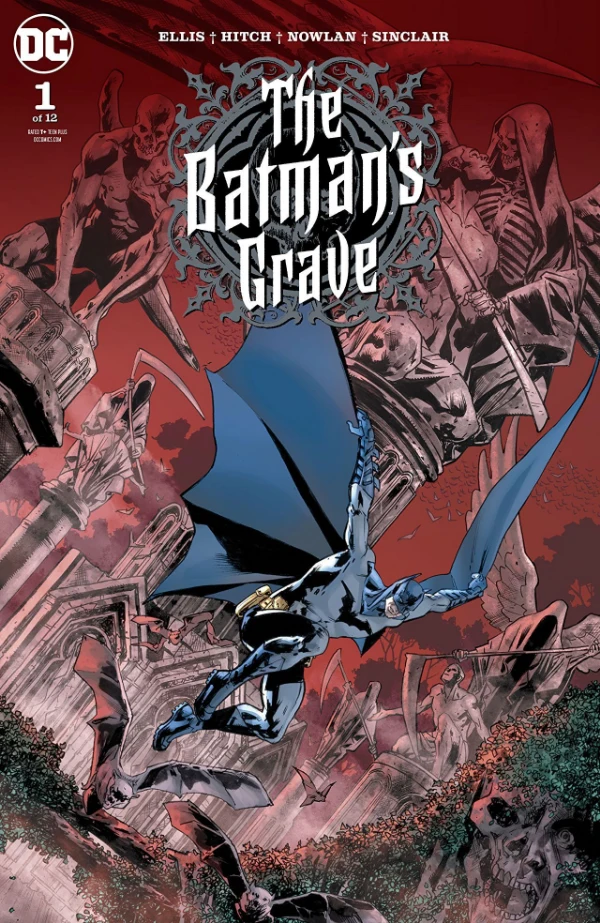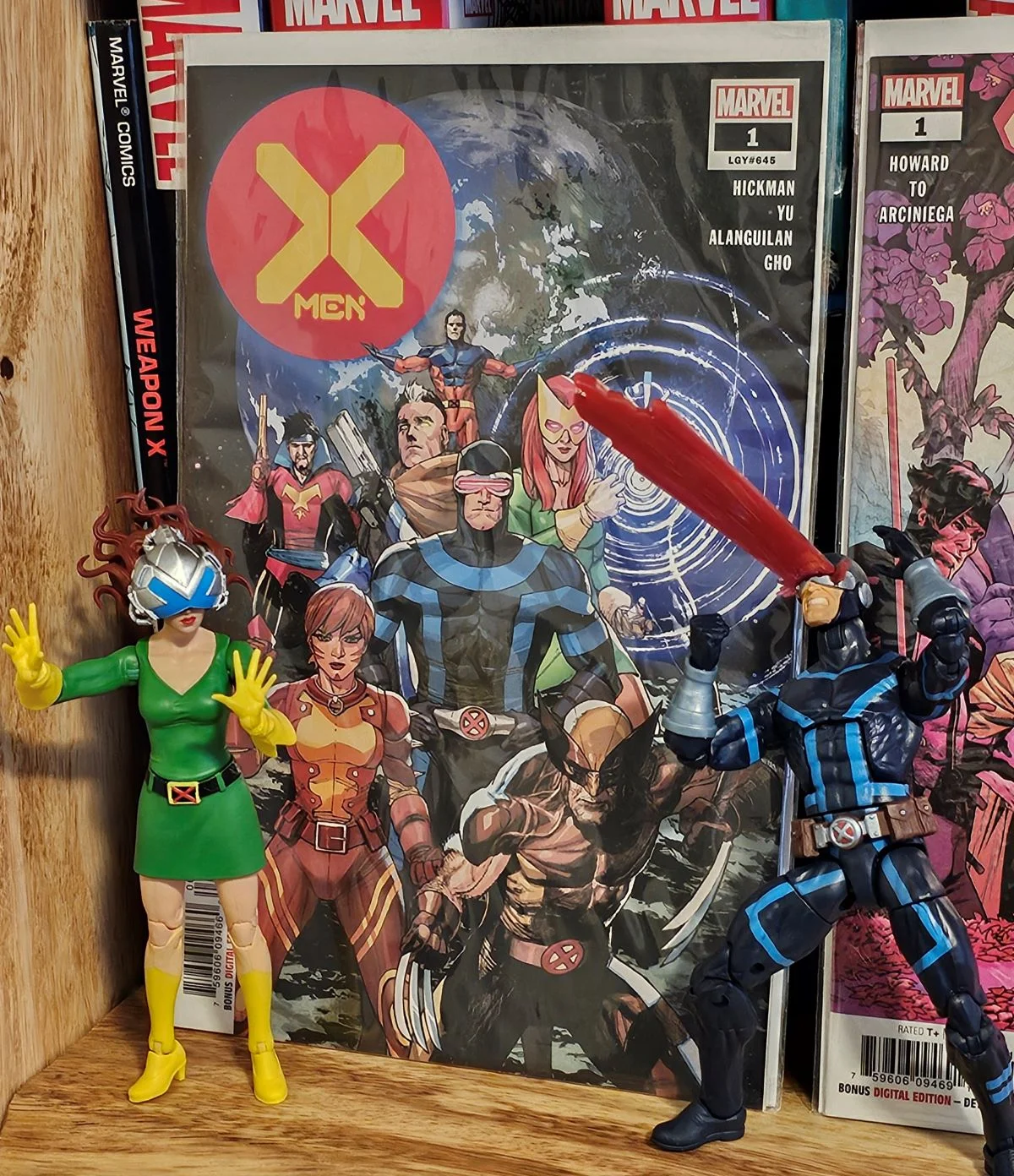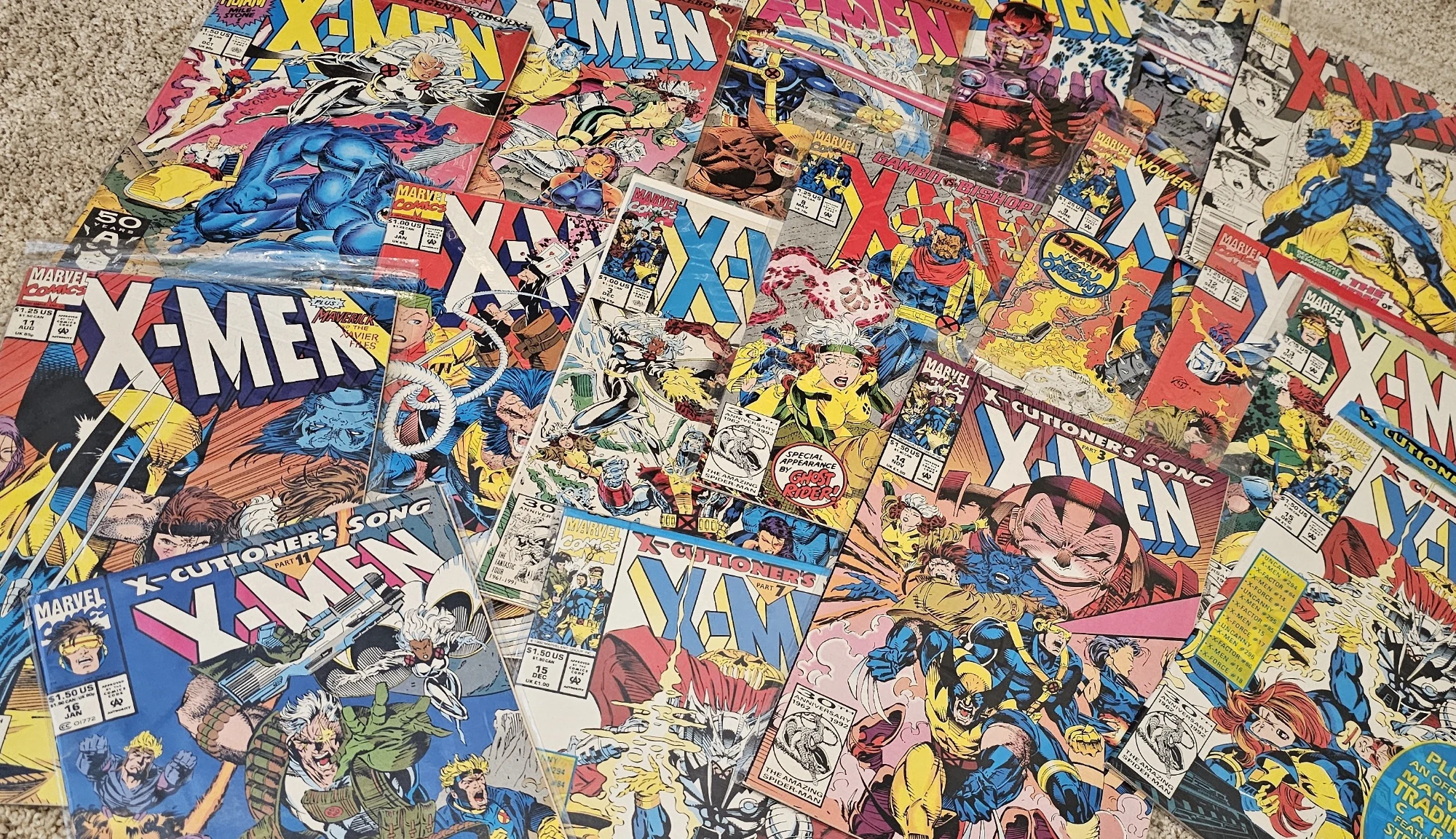Both DC and Marvel contain a multitude of adventures featuring all the pop culture heroes that everyone on Earth these days cannot escape. But issues numbering in the 800s, 900s and 1000s can be intimidating and a turn-off for new readers wanting to break into the medium. Here are some details on how comics typically “work” and general recommendations for entering the chaotic arena.
DC & Marvel:
It’s always nice to start at the beginning of a story, but finding that opening point in a world full of renumbering, reboots, resets, retcons and revisionary histories can be tough.
Typically, the big superhero publishers have monthly “ongoing” series’ as well as mini-series, crossovers, one-shots or limited events. While it may be hard to tell which is which, they all can provide their own positives and negatives which will be explored here.
One-Shots
Let’s start with One-Shots, since that’s the easiest to explain. A One-Shot is a #1 issue which is the beginning and end of the “story.” These can be stand-alone stories, or related/bonus issues tied into other ongoing series or events. There will not be #2 issues for these, hence the name.
Seen in the image is Batman: Vengeance of Bane One-Shot with a self contained story. This is an odd one where there was actually a Vengeance of Bane #2 two years later, however at the time this issue was published it was truly a one-shot. I imagine this has happened a few other times in comics history.

Mini-series
A mini-series is usually three to twelve issues, and is mostly self-contained with a beginning, middle and end to most story plot points. An example of this is Batman's Grave, which is a complex and fun twelve-issue story arc and needs no history or other context to read in full.
A mini-series can be an easy way to enter into the world of comics, but sometimes a bit of research online and reviews can help find out more.
Some of the most famous and popular stories for both DC and Marvel are self-contained mini-series.

Ongoing Series
Breaking into the bigger ongoing series is going to be tougher, but there is advice here too.
Let’s say you like Batman, because who doesn’t, and you want to read his story. Well, DC does not really make it that easy, even after doing a plethora of research. There are so many different series, and it seems like there is a new #1 issue almost monthly at this point.
The good news is, a #1 issue is always a good “jumping on” point, whether it is an ongoing series, mini-series or a limited event story.
DC publishes both “Batman” and “Detective Comics” (and more) as ongoing monthly series, which have been running since before most any of us were born. While starting at issue #27 of Detective Comics would technically get you a full-story of Batman, the comic world resets its history so often these days that one does not have to begin reading from May 1939-onward to enjoy the character.

The most cohesive ways to read a comic in the modern age is to find all issues from the same writer on the same series, as those tend to tie together through the writer’s time on a book. Stories are usually told in multi-issue “arcs” which tend to last from four to six issues, however at times are longer or shorter. Five-to-six issues is a fairly usual story length, and typically have titles with a part 1, part 2, etc. that can help a new reader figure out where they sit in the tale.

Run
These days, typically a writer is hired to do a “run” on a monthly comic book, or a full “mini-series.” A writer may be hired to do one, or multiple arcs by the publisher, making their story anywhere from five or six issues, to thirty, or fifty+ issues composed of multiple arcs all tying together. When discussed by fans, a writer’s time on a specific book is normally called a “run” i.e. “did you read Grant Morrison’s run on Batman?” This is basically asking if one has read this author’s entire time writing in the Batman series.
One would assume that based on what I have said so far, that Grant Morrison wrote a string of Batman issues to complete his “run.” While this is true, he is a chosen example to show how complicated comics can be. His complete “run” on Batman are issues #655 to 658, 663 to 683, and then Batman & Robin issues #1-16 and Batman: The Return #1 (One-Shot), then back to Batman for issues 700-703, then a mini-series Batman: The Return of Bruce Wayne issues #1-6, and then Batman Incorporated issues #1-8 and Batman Incorporated: Leviathan Strikes #1, then back to another Batman, Incorporated series restarting #0-13 and Batman, Incorporated Special #1. Got all that?! No? That’s okay.

Mostly, the Grant Morrison run was an over-complicated example of how tough it can be to follow one comprehensive story. And, to be honest, I am leaving out a few important pieces in that tale also, such as a Crossover The Resurrection of R’as Al Ghul, another limited series 52 and “event” mini-series Final Crisis which the author also contributed to.
A majority of author runs are much easier to follow, such as Tom King’s run on Batman, which runs from Batman issues #1-85. The only complication here, is that Tom King’s Batman #1 is much newer than Grant Morrison’s Batman #700. Why? Well, because DC renumbered Batman with a new #1 in both 2011 and again in 2016. Typically this is done for a sales boost, however also it is done to encourage new readers to “start here” with a new #1.
The real advice is to choose a character of interest, and then aim for one writer’s opening arc. These days, the publishers are so eager to boost sales that often times they are renumbering the ongoing series as #1 to coincide with a new creative team boarding the title, however sometimes the beginning of a new writer can start with Batman #655, or Detective Comics #994. Research can be key, however again, #1s are a great place to at least give a series a try. If you like what you are reading, keep going. Start learning which writers you like, and follow their time on varied books, and check out their independently published stories, as they typically have full control over those and are unrestrained by large company editors.
There are tons of awesome websites out there dedicated to proper “reading order” and continuity of characters and stories. Find a few of those to help guide your path, but let the character of your own interest be the biggest factor in starting out.
A take on Crossover events, Event series and limited/mini-series:

A “Crossover” event is usually when two ongoing series swap issues to tell one tale, such as a recent Wolverine/Ghost Rider crossover event called Weapons of Vengeance. This full story is told starting in One-Shot Ghost Rider/Wolverine: Weapons of Vengeance Alpha #1, then Ghost Rider #17 (from the ongoing monthly series), then Wolverine #36 (from the ongoing series) and finishing with another One-Shot Ghost Rider/Wolverine: Weapons of Vengeance Omega #1. While only four issues, it branches two one-shots and two regular series books for one story. Sometimes a crossover can involve three, four, five, or more ongoing monthly series. In this case, both Ghost Rider and Wolverine ongoing series were written by the same author, so he was able to blend both series into one crossover story easily. Many crossovers are done by multiple authors from multiple series, and results can vary.
Event/Limited/Mini-Series are usually special stories contained in their own titled books. This might be something like Batman: The Long Halloween, or Absolute Carnage, or INFERNO. These can either be self-contained, or part of a larger story arc. Research can help, but usually the series itself will contain most all of the reading you need for that specific tale.
Collected Editions:
Publishers usually try to collect the arcs in short paperbacks (Trade Paperbacks or TPB), or longer 10+ issue hardcover collections with oversized pages, or even longer “Omnibus” books which can be up to 50-60 issues in one book and also contain the oversized page size. Economically, it can be best to purchase the omnibus versions as the price per issue can be much lower than single issues, or even the TPB versions at times, and you get a lot more of a full and cohesive story.
All other Comics (Independents):
Independent publishers are typically easier to handle, as the series are typically much shorter and self-contained. The only real advice here is read the general synopsis and start at the beginning when possible. Most reviews on this site will focus on independent series, as DC and Marvel publications are well covered across the internet.
